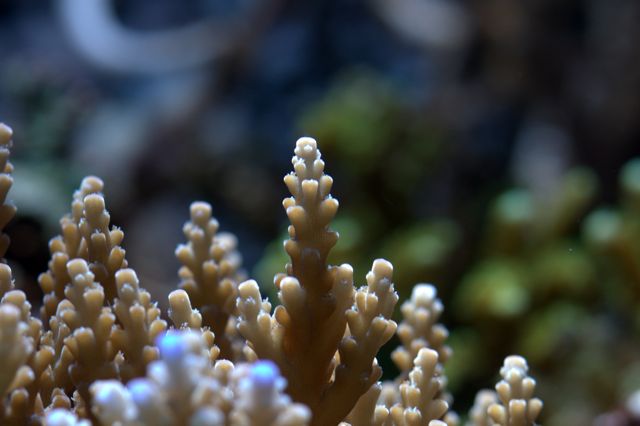Having an aquarium in your home should be a relaxing and tranquil gesture. But once you delve into reefing, things get quite loud. Reef aquariums are usually heavy on equipment and plumbing, and both can transform a peaceful space into a distracting concert of sounds. Suprisingly, finding a centralized reference for silencing a reef is rather hard. So let’s do it here.
The Noisy Overflow:
Silencing an overflow is actually a straightforward thing. The most effective way of doing this is using the Herbie and Baggie Method combined. Reef-ready tanks come with two drilled holes. One is usually 1″ and the other 1/2 to 3/4″. The Herbie Method eliminates noise by eliminating air from the drain in the first place. The basic premise is that you utilize both drilled holes in your overflow as standpipe drains. The wider hole will be the main drain.
The trick is adding a gate valve before the sump, and closing it with small 1/4″ turns till the water remains an 1″ or so above standpipe while still draining. The standpipe should be high enough that water entering the overflow doesn’t have to fall far. The smaller standpipe is your backup, in case the gate valve drain clogs. The smaller standpipe needs to be higher than the main standpipe.

By utilizing a gate valve to raise the water slightly, you eliminate the noise of bubbles entering your sump. And the taller standpipes will reduce the splash noises, because water will not have far to fall. But even a few inches will cause a noticeable splash. This is where the Baggie method comes into play….
The Baggie method simply entails loosely zip tying some ziplocs to the top of your overflow teeth. The bag is allowed to sit downward in the overflow, which ensures the overflow water runs down between the bag and inner overflow wall.

Both of these methods fall under “TRY AT YOUR OWN RISK”. Ensure that your backup standpipe can handle all the flow from your return pump. And ensure that the bags don’t somehow seal off the overflow teeth.
What about the return? Now that the return pump bulkhead has been repurposed as a backup drain, the return pump plumbing requires a little more DIY. It’s not that hard to just plumb it over the lip of the tank.
Loud equipment:
This one is easier to fix on a new build, because buying the right gear is 90% of winning the noise battle. The main culprits are pumps, skimmers, and cooling fans.
First off, internal pumps and skimmers are usually more quiet. Stay away from loud beasts like Mag Drives. Askol-based pumps are renowned for their silence. Sicce and Tunze are silent as well. Make sure your skimmer and return pump fall in these category of brands. To quiet existing return pumps, look for silicone square pot grippers at your local kitchenware store. They are ideal to place under pumps to reduce vibrational noise.
Thin rubber vibration mats can be sourced through car audio vendors and also as washing machine dampeners. Adding such a mat between your sump and aquarium stand will further reduce vibrational hum. And if you are a fan of hard pvc plumbing, make sure to include a small section of vinyl or silicone hose between the pvc and your return pump. This will also cut vibration.
Most Aquarium stands are wide open in the back. This is a good thing for reducing potential humidity issues from your sump and related filtration. Some folks opt to close it up with plywood(sealed and painted), and use a small computer fan to remove stale air. Enclosing the stand keeps the noise inside. While you’re at it, line the inner sides and doors of your stand with thin closed cell foam. It’s easy to source from Car Audio places as well. Honestly, soundproofing your stand is probably overkill if you choose your equipment wisely.

Loud fans are tricky. If the fans are in a name-brand light fixture, you should not mess with them unless you have some electrical background. And you are probably risking the warranty as well. Ultimately, it’s probably smarter to look for a better designed fixture. If it’s canopy fans in question, there are many really quiet computer fans available these days which work great for canopy cooling as well.
Noise, especially vibrational hum, can be extremely distracting from a beautiful reef tank. Good planning and a little DIY can eliminate the noise and bring the focus back on the fish and coral. If you have any additional noise reduction tips, we’d love to hear about them in the comments or the reefbuilder forum!



